There are Houseplants to Keep Your House Cool During Summer! Don’t believe it? Read more in the article.
In order to keep themselves cool, plants and trees release water from their foliage in a process called transpiration. If you are going to grow them together in any of your rooms, they can surely bring the mercury down to a slight extent.
Check out the best houseplants to increase humidity here
How Can Houseplants Keep Your Home Cool?
When plants take water from the soil through the roots, it travels to the stems and foliage. Some of that water exit the leaves during transpiration, which is also termed as ‘Sweating,’ this process makes the plants and their surrounding air cool.
If you are going to grow plants with a high transpiration rate together, they will increase the humidity and coolness around them.
Check out the Best Houseplants for Healthy Lungs here
Houseplants to Keep Your House Cool During Summer
Grow a combination of these plants from the list to a total of 6-8 in number to experience a noticeable temperature difference.
1. Areca Palm
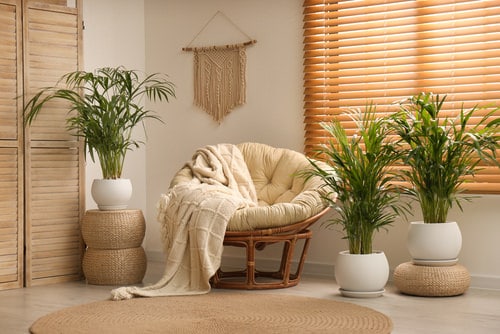
Botanical Name: Dypsis lutescens
Transpiration Rate: 10
A 4-6 feet tall plant emits 1 quart (946.35 ml) of water vapor in the air every 24 hours, making the indoor air humid, which reduces the dry, scorching air during summer months. It also releases a good amount of oxygen into the indoor air.
Check out some fantastic benefits of growing Areca Palm indoors here
2. Bamboo Palm
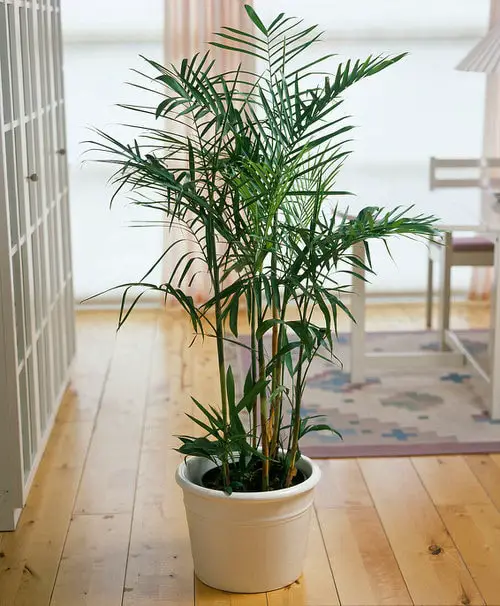
Botanical Name: Chamaedorea seifrizii
Transpiration Rate: 9
Bamboo palms are also excellent in cooling your home in the summer months. With a high transpiration rate, you can club 4-6 plants in your living room.
It is also an excellent plant to filter out VOCs from the indoor air.
3. Boston Fern

Botanical Name: Nephrolepis exaltata
Transpiration Rate: 9
You can grow several Boston ferns near a window or in the balcony. It can improve the humidity by restoring moisture to the indoor atmosphere. For best results, grow them in a combination of pots and hanging baskets. The plant also purifies the air too.
Here are the most exotic ferns you can grow
4. Rubber Plant
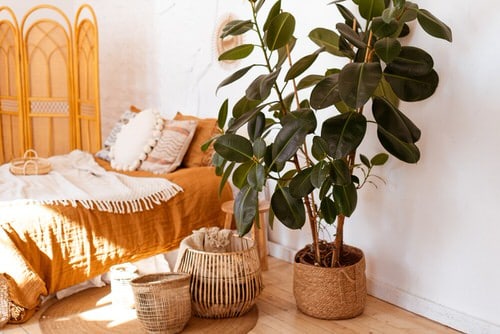
Botanical Name: Ficus elastica
Transpiration Rate: 7
Plants with big leaves have a better transpiration rate and are able to release more moisture back into the air, and the rubber plant is no exception!
The plant absorbs water from the roots and discharges moisture through the pores on the bottom of the foliage, elevating the coolness around it.
Have a look at the benefits of growing rubber plant indoors here
5. Pothos
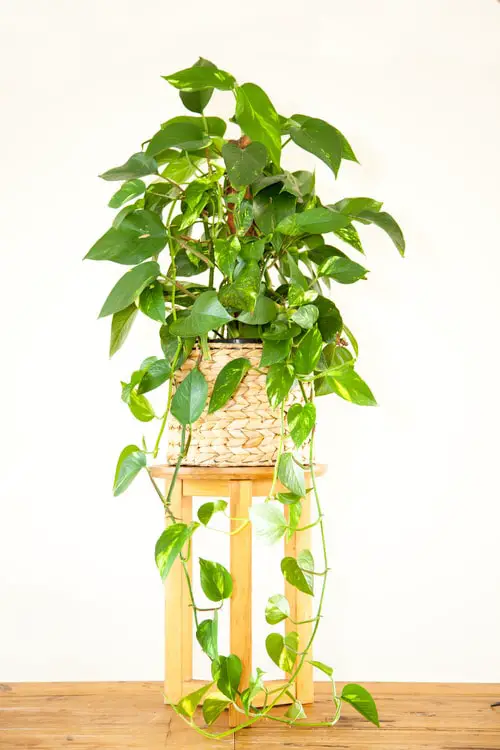
Botanical Name: Epipremnum aureum
Transpiration Rate: 7
The transpiration rate of pothos is so high that you can sometimes see water drops on its leaves. This works wonderfully well in increasing the humidity levels in the room, which ultimately brings down the temperature and eliminates the dry air problem.
Check out our article on the benefits of growing pothos here
6. English Ivy

Botanical Name: Hedera helix
Transpiration Rate: 7
Grow English ivy in a hanging basket or pot on a plant stand. Keep it on the windowsill, balcony, or close to the door. Being a vine, you can train it to cover the entire outer wall to keep the temperature down.
Have a look at the amazing benefits of growing English Ivy here
7. Dumb Cane
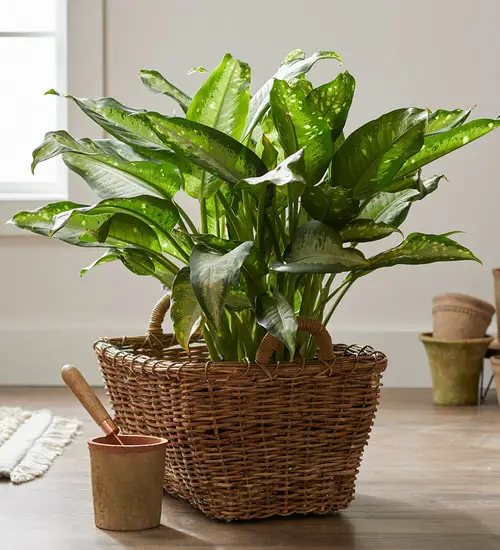
Botanical Name: Diffenbachia
Transpiration Rate: 7
With broad, upright, and densely crowded variegated leaves, dumb cane not only purifies the indoor air but can also play a small part in keeping your home cool in the summer. It can grow up to 4-6 feet tall in indirect light. For best results, grow 3-5 plants.
Here are some awesome benefits of growing Dumb Cane
8. Chinese Evergreen
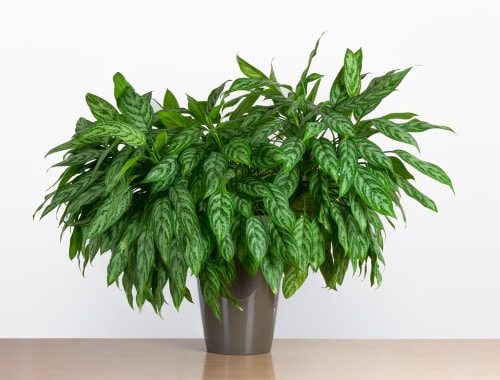
Botanical Name: Aglaonema
Transpiration Rate: 6
This air-purifying plant has a high good transpiration rate, and a lot of them growing together can keep the air moist and cool. Aglaonema is available in a range of varieties and is an easy to grow plant that survives in low-light areas.
Have a look at our article on growing Aglaonema here
9. Weeping Fig
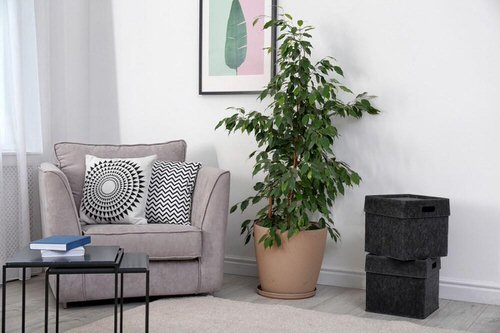
Botanical Name: Ficus benjamina
Transpiration Rate: 6
While growing Ficus Benjamina indoors, choose a plant with a bushier top and tall stem or trunk that creates a little canopy. It helps in improving humidity levels and make its own atmospheric ecosystem, which brings a noticeable drop in the temperature of the room.
10. Philodendron

Botanical Name: Philodendron
Transpiration Rate: 6
As the plant trails down well, you can grow it in hanging baskets and hang many of it in the room if you want to create an indoor jungle like appearance.


